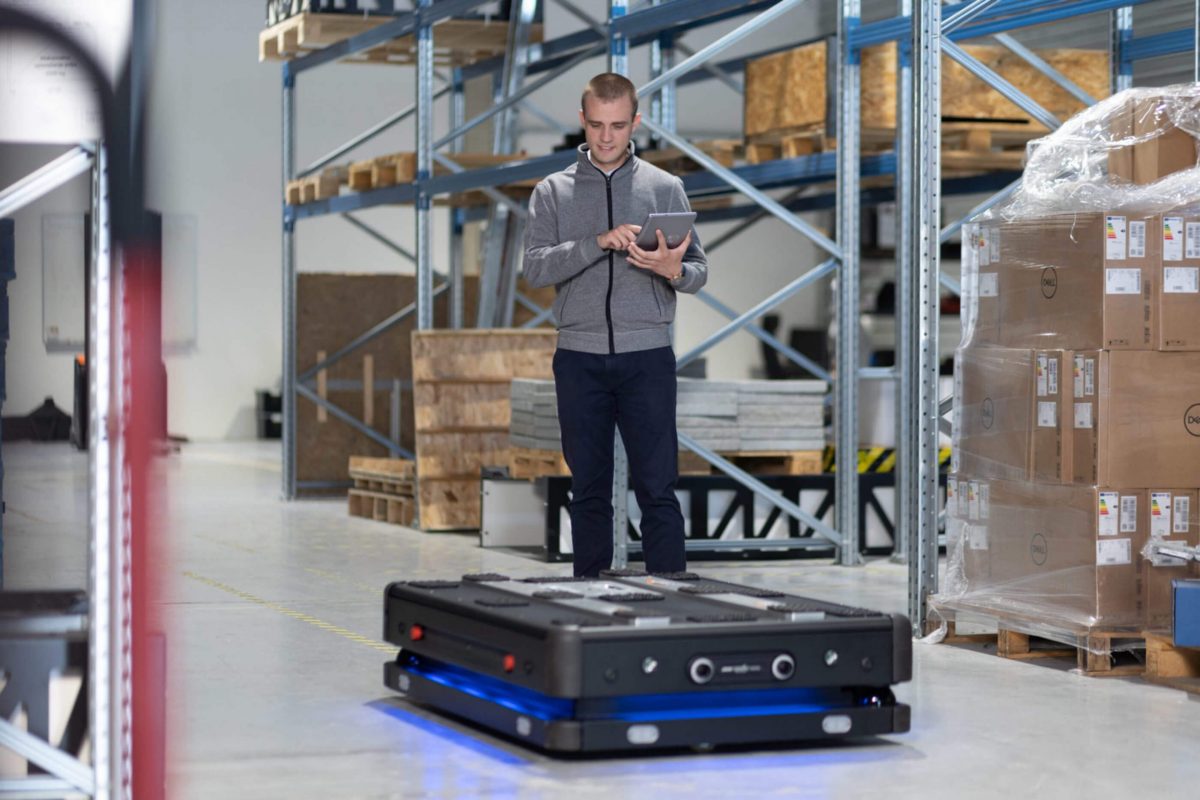- Solving Labor Challenges
- blog
Seven steps to prevent employees’ fear of logistics robots taking their jobs

Robots will take “800 million jobs globally by 2030”, “machines will do half of all work tasks by 2025”, “the robots are coming, and they want your job”, “robots will destroy our jobs – and we’re not ready for it”. These are all real headlines from large news outlets in the last couple of years. Not all articles, however, list the other side of the coin – robots compensating for the dwindling workforce, creating new jobs and opportunities, and raising productivity.
Making sure your employees understand the opportunities that an investment in logistics robots brings to the company is key for a successful transition. Getting employees on board will cut training and transitional downtime, making sure everyone – workers and managers – are focused on a successful roll-out.

1. Timely information prevents fear
If a vague bit of news is leaked – or released – that “the robots are coming”, you are leaving an informational vacuum that demands filling. This is where negative scenarios multiply, causing worry and fear, warns Tanja Prekodravac, Head of Organizational Design and Development at Zagreb-based Selectio.
“Resistance to new technology happens whenever we are troubled […] that it represents a threat”, Ms Prekodravac told us in an interview focusing on employees and robots.
Understanding this key principle is a crucial starting point.
“With communication – good communication – we, in fact, manage people’s expectations.”
2. Make a communications plan
Just as you plan the technical and financial side of implementation, a communications plan focusing on your workers should be an integral part of the roll-out.
“We must think on two levels. One is devising a technical plan of the change: buy robots, have a budget, organize training, etc. The other is the communications plan”, Ms Prekodravac says.
“We tell them when it will happen, what it will be, who will lead it, how it will happen”, she says, adding that we shouldn’t tell them all technical and methodological plans as “it’s too detailed, too technical – here we need well-shaped information”.
“Managers sometimes focus intensely on implementing the methodological part and completely ignore the emotional response from the team”, warns Ms Prekodravac.
3. Explain reasons
A very good way to make sure employees are open to the change – investment into logistics robots in this case – is to make them realize that it’s necessary.
The so-called four Carthusian questions are very useful here, Ms Prekodravac says.
“Carthusian questions can be used in group and individual work, they can be used in coaching – whenever you want to raise the level of awareness and insight”, she added.
The questions are:
What will happen if a change occurs?
What will happen if no change occurs?
What will not happen if a change occurs?
And finally, what won’t happen if no change occurs?
“Different variants of answers and insights prompted by these four questions can, in a certain sense, prompt a change of attitudes as well”, Ms Prekodravac explains.
4. Allow ‘brewing’ time
“It takes at least 15 days for people to absorb the experience, to sleep on it, for the process to take its course, etc., so that in the end, once you stop supervising, things function just like while you were supervising”, warns Ms Prekodravac.
“The more intensive and complex a change is, the longer the period of implementation must be, of course. And it must be supported constantly”, she adds.
Ms Prekodravac draws attention to the basic three-stage Lewin model of organizational change management. The first stage is ‘Unfreeze’, making sure employees are open to change; the second stage is the change itself, and the third is to ‘Refreeze’, or reinforcing the implemented changes.
5. Involve those actively opposing the roll-out
We can say that, without knowing anything about the change, 10% of employees will actively oppose it, Ms Prekodravac says. They will verbalize their resistance actively – “no, I will not, I don’t want to, I will not allow it, I can’t…”. There will also be those who are passively against something, as well as those who are actively or passively supporting the change, and finally, the largest share – those are people who are undecided.
“Those that are actively verbalizing their attitude against the change”, Ms Prekodravac explains, “are influencing the undecided segment of employees”. Thus, we should focus our efforts on those who are actively for – the ‘positive agents of change’ – as well as those actively against. The idea is to ‘neutralize’ the nay-sayers by getting them involved in the transition process – by giving them a part to play in the implementation. This will help them “connect, integrate themselves”, with the change.
6. Remember that the basic unit of change is the individual
A manager should never forget that he is dealing with people, and where there’s people, there’s emotion.
“If we don’t prepare the emotional foundation with employees well enough – communicating that the change does not represent a threat – then the change is likely to encounter resistance”, Ms Prekodravac warns.
She explains why the importance of emotions – and managing them through information – should never be undermined. Fear raises energy because it signals a danger, prompting a physiological reaction of the body.
“If we want to protect employees – that is, their cognitive capacity, so that they can focus on tasks – then it’s counterproductive to allow the organizational atmosphere to be permeated by fear, uncertainty, insecurity…”, Ms Prekodravac says.
“When you have teams – that is, people – who are mentally occupied by processing a potential danger and processing their own emotional states, you won’t have great performance.”
7. Adjust the approach to the generation
Even though younger workers might have quicker uptake with new technology, you will need to plan for more communication.
Explaining the reasons is especially important in managing people of the Y and Z generation, Ms Prekodravac says.
“Generation X has been, so to speak, more obedient on average – more respectful of authority – on average. Research has shown that today’s young people, the Y and Z generations, mostly say they prefer management styles that allow them to be informed, where their opinion is consulted, where they understand what is going on.”